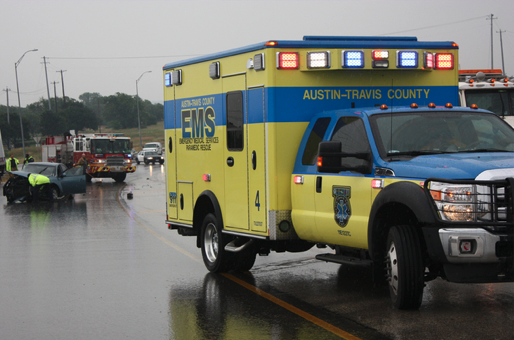City still faces gap in first responder pay, benefits
Wednesday, November 16, 2022 by
Nina Hernandez After a presentation comparing first responder salaries and benefits, and a direct plea from an Austin-Travis County EMS medic, the city’s Public Safety Commission is recommending the city take another look at closing the compensation gap between paramedics and the city’s other first responders.
At its regular meeting on Nov. 7, the commission passed a resolution recommending City Council direct the city manager’s office to provide Austin-Travis County EMS medics with pay quality and pension benefits comparable to the city’s other sworn public safety agencies.
The decision came after a presentation from Austin Police Department, Austin Fire Department and ATCEMS leadership on the salary and benefit situation of all three departments.
Currently, APD officer base pay is $62,895. That rises to $77,900 in year five and to $83,351 after 10 years. Austin firefighters earn a base salary of $60,053 in year one. In year 5, that base salary rises to $71,125 and in year 10 to $78,414. For Austin-Travis County EMS, starting salary is $41,480. After five years, that rises to $56,207 and in year 10 it rises to $64,373.
Austin EMS Association President Selena Xie noted that the numbers include a recent 4 percent raise for ATCEMS but not updated figures for AFD and APD, which received the same raise. That means the disparity is actually greater than the numbers shown to the commission indicate.
“It’s not a surprise that we’re 23 percent short-staffed while AFD is about 8 percent right now and APD is about 10 percent last time I checked,” Xie said, adding that the disparity grows with time. “At the 10-year mark, an APD officer makes $20,000 more than what a medic will make.”
Jordan Malone has been a medic for two years. He told the commission that by his calculations he will have to work on an ambulance for 42 years before ever receiving a retirement check. “Unfortunately, this is killing our retention and recruiting, especially in younger potential applicants.”
Xie confirmed Malone’s calculations and said that time frame is closer to 25 years for fire and police.
Malone, who works in community outreach and recruitment for the department, has found the current salary and benefits package is a detractor to potential candidates. Those who do become his colleagues often struggle to be promoted out of the base salary due to the long hours and the demands of paramedic certification.
“They can’t afford to pay the bills and take care of their families,” Malone said. “I’ve had two classmates drop out because of that.”
In addition to comparing pay quality to the other public safety agencies, the resolution asks the city manager to find ways to make the pension structures more fair and consider how the city could pay for paramedic school.
“Historically, maybe it made sense to policymakers to pay police and fire this much more given that being on an ambulance wasn’t as dangerous,” Commissioner Rebecca Webber, who sponsored the resolution, said. “But that is certainly belied by the situation today.”
The Austin Monitor’s work is made possible by donations from the community. Though our reporting covers donors from time to time, we are careful to keep business and editorial efforts separate while maintaining transparency. A complete list of donors is available here, and our code of ethics is explained here.
You're a community leader
And we’re honored you look to us for serious, in-depth news. You know a strong community needs local and dedicated watchdog reporting. We’re here for you and that won’t change. Now will you take the powerful next step and support our nonprofit news organization?









